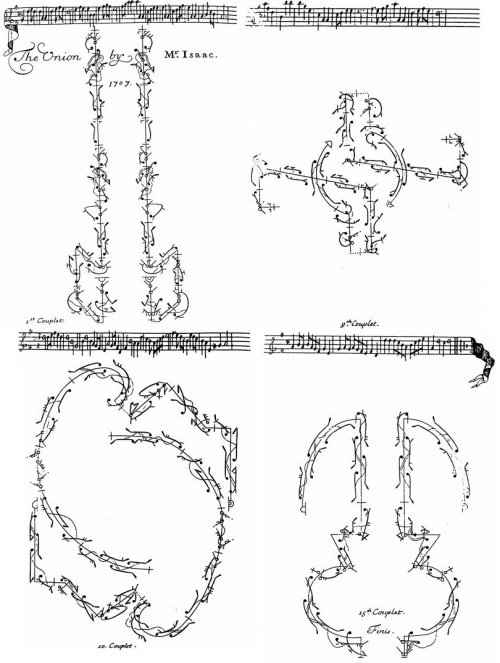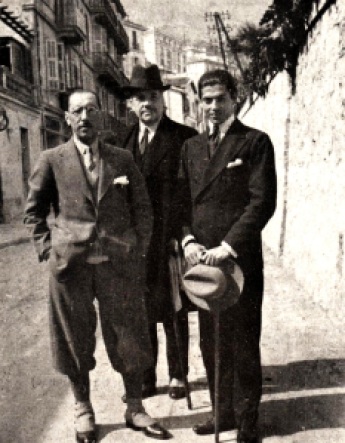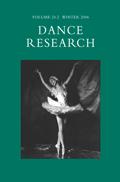The 1707 Act of Union joined England and Scotland as a single entity. For the birthday of Queen Anne that year the choreographer Mr. Isaac created The Union, a couple dance that conveyed some of the tensions involved in forging a new national identity.
The doctrine of affections linked the genres of the dance’s loure and hornpipe sections with specific emotions. The loure was connected with pride, even arrogance, as well as a tinge of nostalgia; in this section of The Union, the two dancers pass and join with an air of circumspect ambivalence, expressing cultural rapprochement. Associated with Scotland, the hornpipe was linked with vigor and vitality, and the second section of The Union presents an idealized, anglicized vision of Scottishness.
This according to “Issues of nation in Isaac’s The Union” by Linda J. Tomko (Dance research XV/2 [winter 1997] pp. 99–125). Above, excerpts from John Weaver’s notation of the piece using the Beauchamp–Feuillet system.
Related articles:








